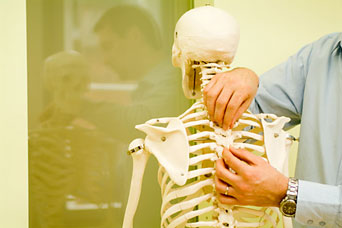Fascial Distortion Model (FDM)
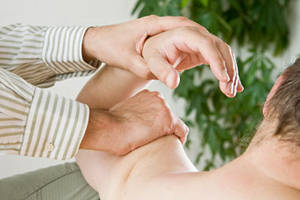
Fascial Distortion Model by Typaldos is a method with which examination and treatment are executed exclusively by viewing the body language and treat with the hands/manual.
Taking into account the personal history, individual development, and the current condition of life of the patient, daily moving habits and restricted moving ability are sensed and treated individually and in most cases with manual techniques.
![]() What’s so special about the Typaldos- Method?
What’s so special about the Typaldos- Method?
![]() History of the Fascial Distortion Model by Dr. Typaldos
History of the Fascial Distortion Model by Dr. Typaldos
![]() What can be treated by Typaldos Method and Typaldos Manual Therapy?
What can be treated by Typaldos Method and Typaldos Manual Therapy?
![]() Fascial Distortion Model (FDM) in Germany
Fascial Distortion Model (FDM) in Germany
![]() The Basic Principles of Typaldos and Osteopathy
The Basic Principles of Typaldos and Osteopathy
What’s so special about the Fascial Distortion Model?
Many patients miss, within our system of medical treatment the feeling that their problems are really paid attention to. You often have to put up with long waiting periods before you get to see the doctor and often just for a few minutes.
There is no time for a thorough examination and comprehensive diagnosis. People searching for medical help often make the experience that the examinor does not even actually take a close look at them leave alone touch them at all.
In this context the Fascial Distortion Model (FDM) founded by Dr. Stephen Typaldos offers many people an alternative to conventional medical treatment: The touching with the hands, the careful examination and the exact appointments (without long waiting periods). FDM is an activity- oriented approach without seeing only the illness.
All these conditions enable a closer working relationship between FDM therapist and patient which in most cases has a further positive effect on the treatment. A trustworthy relationship is a principle necessity for a cure of human complaints.
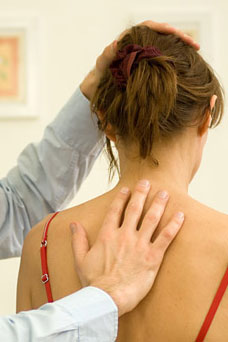
History of the Fascial Distortion Model (FDM)
The basis for the work of the Fascial Distortion Model was laid about 21 years ago by the American physician Dr. Stephen Typaldos D.O..
Dr. Typaldos developed the Fascial Distortion Model after being instructed by a patient to treat a line from the neck to the head. Dr. Typaldos called this line later the Star Triggerband.
Dr. Typaldos went on by studying the gestures to express the complaints of his patients and published 1994 and 1995 some papers about his work in the journal of the American Academy of Osteopathy (AAO) and integrated them into Osteopathy.
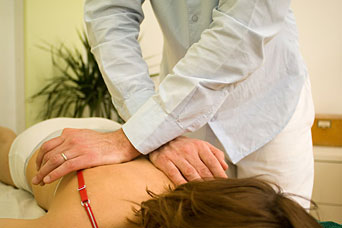
What can be treated by the Fascial Distortion Model?
Besides many problems of the field of movement as for example stiff neck, sloping shoulders, painful sciatic nerve, lumbago, sports injuries, arthrosis, tension, rigid shoulder joints, and similar complaints the Fascial Distortion Model (FDM) also addresses other systems with their malfunctions.
Every complaint that can be expressed verbally or through body language could be treated by the Typaldos Manual Therapy or the Fascial Distortion Medicine unless it is not life- threatening like appendicitis or heart- attack. That is the reason why the Typaldos- Method should only be executed by medical stuff.
Good indicators for a FDM treatment are furthermore head ache and buzzing in the ear.
Acute infections, tumors, heavy injuries and massive mental or metabolic deseases may be – depending on the respective case - treated by FDM in addition to a conventional medical treatment as agreed with the conventional physician.
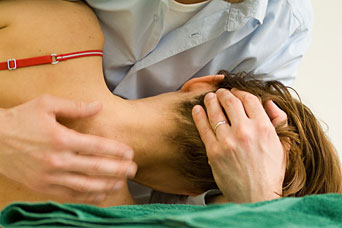
Fascial Distortion Model (FDM) in Germany
In Germany, FDM by Dr. Typaldos did catch at the beginning of this decade. Dr. Georg Harrer MD (Vienna) was chosen by Dr. Typaldos to spread the FDM in Europe. Together with Christoph Rossmy he founded the European FDM Association (EFDMA) and teaches the Fascial Distortion Model all over Europe.
FDM belongs to therapeutics which, according to German law, only physicians and non-medical practitioners are allowed to execute. Following their recommendation physiotherapists are also allowed to work after the FDM.
As the term Fascial Distortion Model is not patented, there is already a multitude of different forms of training.
I assume to attend only FDM seminars taught by FDM Instructors of the official European FDM Association EFDMA (![]() www.fdm-europe.com)
www.fdm-europe.com)
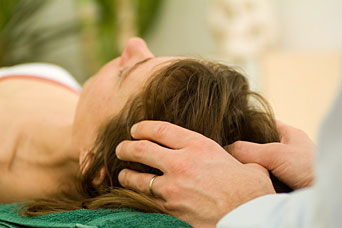
The Basic Principles of Fascial Distortion Model and Osteopathy
Dr. Stephen Typaldos D.O. was an us- american physician who founded a new approach through the bodylanguage and verbal descriptions.
The principles mentioned above, represent the basis of every osteopathic treatment and are differnet than the priciples of the FDM.
In the FDM the therapist believes in the views and descriptions of the patient.
No matter how long the training of a therapist takes and whether he/she prefers to works very structurally or merely energetically – the basic principles should be internalized by every person who claims to work osteopathically.
"Mein Ziel ist, dass der Osteopath philosophisch denkt und die Ursache sucht." A.T. Still
1. Interaction of structure and function
To illustrate this idea you may think of a cupboard the doors of which are not aligned correctly (structure) so that they do not close properly – or vice versa: if the doors do not close properly, it is quite probable that something is not right with the structure of the cupboard.
The biologist and cellular researcher Dr. Donald Ingber from Harvard University pointed out in his research work on cells the interaction between cellular structure and functions. You will always find it again: when the structure of a cell changes this has an influence on the cellular function and vice versa: when the function of a cell changes its structure will be influenced by it accordingly.
This basic osteopathic principle becomes very clear when you take a look at the treatment of the digestive organs: As the organs permanently glide to and fro because of the pressure imposed on them by breathing in and out, osteopathy tries to improve their function through an improvement of their ability to glide.
2. Self-healing ability
Our organism is permanentlyexposed to a diversity of influences. Basically has the principle ability to help itself and balance these factors. Pain and/or disease are a sign that this mechanism is not working properly any more and cannot cope with too many negative influences.
Osteopathy does not claim that it alone cures the ailments but rather that through the intervention of the therapist with his hands it helps the organism to regain its ability to help itself and furthermore to handle the negative influences and damages already caused.
3. Body as a Unit
Osteopathy does not comprehend health as a final state to strive for but as a dynamic balance. It helps the body to find back this balance and to have the strength to compensate disturbing influences.
A body in dynamic balance is the result of a harmonious interplay between all involved structures. If this interplay is interrupted a state of imbalance results and at the weakest or most strained part of the body disease or malfunction may occur.
This also means that the place of origin is not necessarily identical with the part of the body where the trouble occurs. A blocked jaw joint might for example find expression in aching knees and vice versa.
By means of a careful physical examination the osteopath tries to find out the trouble-causing location and to re-integrate the respective part of the body.
4. The Law of the Artery (Life is Movement)
A free unhindered passage of all body fluids and impulses means nutrition and thus life.
If tension causes a lack of nutrient supply leading to failure to dispose of metabolic waste within certain areas of the body, this may result in malfunctions or diseases of the respective parts. The osteopathic treatment will try to re-establish balance so that in all areas of the body a continuous nutrition supply and disposal can be achieved.
5. The Patient not the Disease
In the focus of osteopathic treatment stands the human being and not his/her current illness. Moreover, osteopathy always considers the general function of the entire body.
Experimental sciences and their relevant research results are also taken into account.
They do not, however, stand in the foreground of the treatment. The name of the disease is not as important as the approach to the patient as an individual with a personal development and a respective specific surrounding.
„That is the only way to garantee that the fellow human being as patient does not become a prisoner to a definite-considered clinical construction of reality of the therapist.“
(Peter Sommerfeld)
